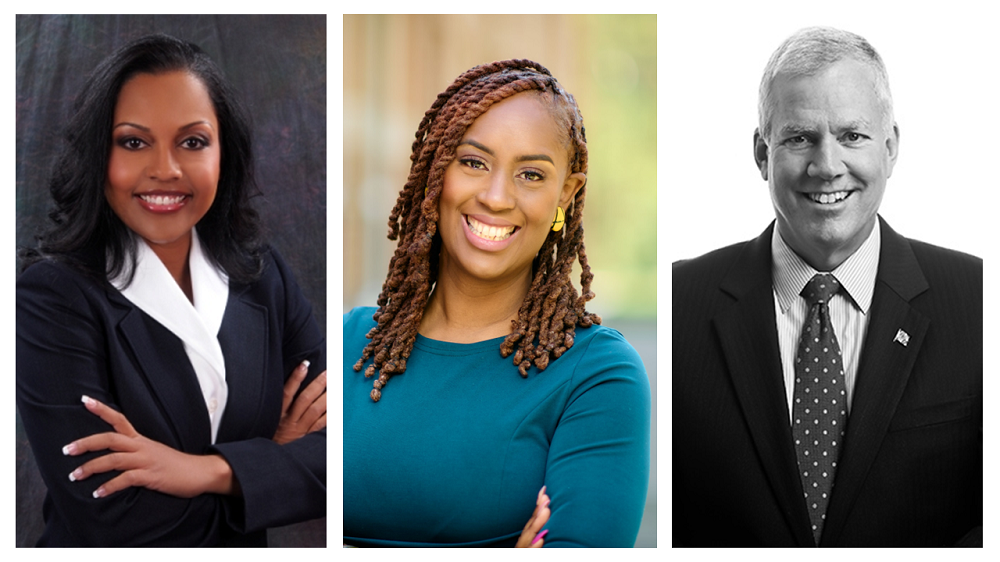
When headwinds are blowing against entrepreneurs, they must innovate to create success.
State legislators encounter similar challenges when working to bolster Maryland’s innovation economy. They must weigh initiatives that are designed to spur growth against budget realities, while devising creative solutions in response to the outside forces reshaping conditions on the ground.
This process was presented at the TEDCO Entrepreneur Expo, held on Dec. 4 at the Inner Harbor’s Renaissance Baltimore Harborplace Hotel. At the event, Maryland Delegates Vanessa Atterbeary and Stephanie Smith discussed their outlook on helping the state achieve fiscal well-being, economic growth and entrepreneurial success. Moderated by former Delegate and current TEDCO Board Member John Bohanan, the conversation touched on Maryland’s budget realities and the state’s competitiveness.
Here’s a look at key highlights from the intersection of public policy and economic opportunity.
Maryland’s Budget Dilemmas
The conversation took place a month before Maryland’s annual legislative session, which convenes in Annapolis each year. Over 90 days, Maryland’s state legislature meets to pass a balanced budget.
Currently, as they head into considerations about next year, the state’s economic outlook remains stable, but in years that follow, a gap remains between the amount of money that is coming in, and the amount of spending the state has planned.
Based on current projections, the state will only have enough resources to cover 84% of the budget by 2030.
“This is more grave than the forecast that we received during the Great Recession, so that’s a sobering reality,” Smith, a Baltimore City delegate serving on the House Appropriations Committee, said.
Atterbeary, a Howard County delegate and chair of the House Ways and Means Committee, laid out the dilemma facing legislators. “I’m sure all of you could name five things that are important to you that you wouldn’t want cut,” Atterbeary said. “So, are we going to cut spending? Are we going to increase our revenue? Nobody wants their taxes increased—whether you’re an individual or you’re a business—so, are we going to do some combination of both? That’s what we must figure out.”
Smith sees another opportunity to be “nuanced and surgical” about redirecting funds that have already been allocated but are currently going unused.
The answer will likely be a combination of all these options. Tough decisions are ahead, and they get particularly complicated when the topic turns to reductions in some of the highest-dollar items in the budget.
Increasing access to childcare, Smith said, is “good for workers, particularly for women in the workforce, but it has created some new deficits that we’re going to have to figure out how to close. Limiting the ability for someone to be valuable in the workforce would be working against our purposes.”
In the end, leaders must weigh their values with budget realities. Bolstering education and increasing economic opportunity are among the priorities that serve as a guide.
“There is no way we’re going to be competitive and create an ecosystem for entrepreneurship, particularly in the tech space, if we do not have a properly educated electorate workforce for you to partner with and for you to deploy,” Smith said. “So, I think that we’re all united in the sense that while Maryland is proud to have a disproportionately highly educated workforce, there are still serious gaps that we need to continue to shore up to remain competitive.”
Supporting Access and Equity in Entrepreneurship
The two delegates have already been at the forefront of new solutions that support underrepresented entrepreneurs.
Atterbeary was a key sponsor of legislation that created TEDCO’s Equitech Growth Fund, which provides grants for infrastructure and workforce development initiatives that support Maryland’s economic competitiveness and inclusive growth. The first awards from the fund were announced during the event’s opening reception, revealing a total of nearly $7 million to be distributed among 14 projects across the state.
Similarly, Smith worked on legislation to create two TEDCO programs:
- The Pava LaPere Innovation Acceleration Grant Program, which supports startups founded by university students in Baltimore.
- The Baltimore Innovation Initiative, a TEDCO program that spurred from the long-running Maryland Innovation Initiative to take a focused approach on the state’s largest city.
Policies like this help to bolster inclusive entrepreneurship within the state. It can create an attractive environment that students want to remain in after they complete school and play a role in attracting businesses from outside the state to move to the state by signaling that Maryland is a place of acceptance and opportunity. It’s also up to leaders from across the public and private sectors to tell the story.
“Maryland could be positioning not only its business community, but its higher education community to be a destination, not just for learning, but for living afterwards,” Smith said. “I feel like Maryland should say, this is a place where you can live authentically, you can build your business, the values for your workers will be honored here… We shouldn’t tiptoe and whisper about it. Maryland has to say this is a state that not only values educated workers and tech, but we are going to figure out how we can partner and make this a valuable place for you to put your stakes down.”
Source: The Daily Record